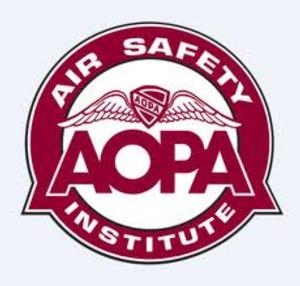Tue, Oct 21, 2014
The AOPA Air Safety Institute Annual Nall Report Gives Us Insight To Analyze The Areas Of Operation That Present The Greatest Risk For Experimental Aircraft
Last week AeroSports Update published a report from EAA regarding experimental-type aircraft accidents. In that report it was pointed out that the accident rate for this year’s reporting period may exceed what the FAA had forecast. In the Air Safety Institute Annual Nall Report we take a look at the areas of operation for experimental aircraft that are analyzed.

The Annual Nall Report is a statistical document that helps look at the past to improve the future. Because of the complexity of the report, the statistics are always about 2-3 years behind the current date of the report. For this reason accident numbers will not match the numbers for this current year as reported by EAA. However the conclusions of the Nall report give us great insight to accident analysis.
In the current Nall report, there were 198 accidents involving experimental amateur built aircraft (E-AB) and experimental light sport aircraft (E-LSA). Most aircraft certified as E-LSA’s are from those aircraft that were converted from 2-place ultralights to an experimental status under the sport pilot rules. This conversion period ran from September 2004 until January 2008.
Unlike accidents in type certificated fixed wing aircraft, mechanical problems were very nearly as common as landing accidents for experimentals. Emergencies during takeoff and climb were also more common in experimentals, accounting for more than 1 out of 8 of all fatal accidents.
The Nall report divides the accidents into 9 classifications of operation. They are:
- Mechanical 25.3%
- Fuel Management 6.1 %
- Weather .5 %
- Takeoff and Climb 12.6 %
- Maneuvering 4%
- Descent/approach 5.1%
- Landing 25.3%
- Other (pilot related) 9.1%
- Other or Unknown 12%
Fifteen of the 24 accidents classified as “other or unknown” involved unexplained engine stoppages; this is a chronic problem area for amateur built aircraft. All told, the combination of known mechanical breakdowns and unexplained power failures caused nearly a third of all accidents in this group of aircraft compared to 19% of those in type-certificated, fixed wing aircraft.
Note that the accident statistics found in the Nall report do not directly relate to the accident statistics released by EAA last week.
Unlike accidents in type-certificated, fixed wing aircraft, mechanical problems were very nearly as common as landing accidents. Emergencies during takeoff and climb were also more common in the E-AB and E-LSA.
More News
Airbus Racer Demonstrator Makes Inaugural Flight Airbus Helicopters' ambitious Racer demonstrator has achieved its inaugural flight as part of the Clean Sky 2 initiative, a corners>[...]
A little Bit Quieter, Said Testers, But in the End it's Still a DA40 Diamond Aircraft recently completed a little pilot project with Lufthansa Aviation Training, putting a pair of >[...]
Line Up And Wait (LUAW) Used by ATC to inform a pilot to taxi onto the departure runway to line up and wait. It is not authorization for takeoff. It is used when takeoff clearance >[...]
Contributing To The Accident Was The Pilot’s Use Of Methamphetamine... Analysis: The pilot departed on a local flight to perform low-altitude maneuvers in a nearby desert val>[...]
From 2015 (YouTube Version): Overcoming Obstacles To Achieve Their Dreams… At EAA AirVenture 2015, FedEx arrived with one of their Airbus freight-hauling aircraft and placed>[...]
 Airbus Racer Helicopter Demonstrator First Flight Part of Clean Sky 2 Initiative
Airbus Racer Helicopter Demonstrator First Flight Part of Clean Sky 2 Initiative Diamond's Electric DA40 Finds Fans at Dübendorf
Diamond's Electric DA40 Finds Fans at Dübendorf ANN's Daily Aero-Term (04.23.24): Line Up And Wait (LUAW)
ANN's Daily Aero-Term (04.23.24): Line Up And Wait (LUAW) NTSB Final Report: Extra Flugzeugbau GMBH EA300/L
NTSB Final Report: Extra Flugzeugbau GMBH EA300/L Classic Aero-TV: 'Never Give Up' - Advice From Two of FedEx's Female Captains
Classic Aero-TV: 'Never Give Up' - Advice From Two of FedEx's Female Captains



